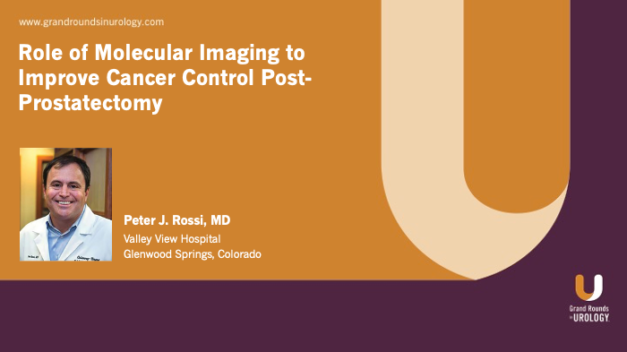The Role of Molecular Imaging to Improve Cancer Control Post-Prostatectomy
Peter J. Rossi, MD, a board-certified radiation oncologist affiliated with Calaway Young Cancer Center at Valley View Hospital in Glenwood Springs, Colorado, considers the evidence for using molecular imaging to improve prostate cancer control post-prostatectomy, focusing on the results of the EMPIRE-1 study comparing 18F-fluciclovine-PET/CT imaging versus conventional imaging alone to guide post-prostatectomy salvage radiotherapy for prostate cancer. Dr. Rossi explains that while doctors may offer postoperative radiotherapy to patients experiencing a PSA rise or biochemical failure, the decision to do so can be complex and failure rates are high. He notes that improving adjuvant therapy is therefore imperative, and investigators have looked to molecular imaging as the means to do so. Dr. Rossi then describes the aims and methods of the EMPIRE-1 trial, noting that the investigators sought to expand the role of 18F-fluciclovine-PET/CT imaging beyond diagnostics and into cancer control by studying how radiotherapy decisions and planning changed based on molecular scans as compared to standard imaging. The results showed that radiotherapy plans were changed in 35.4% of patients based on PET uptake, and that using PET imaging resulted in a significantly improved and significantly more durable failure-free survival rate compared to using standard imaging alone, suggesting that PET is a viable tool for improving adjuvant radiotherapy. Dr. Rossi concludes by looking at future directions for molecular imaging and adjuvant care, highlighting a new study comparing 18F-fluciclovine-PET/CT to PSMA.
Read More


